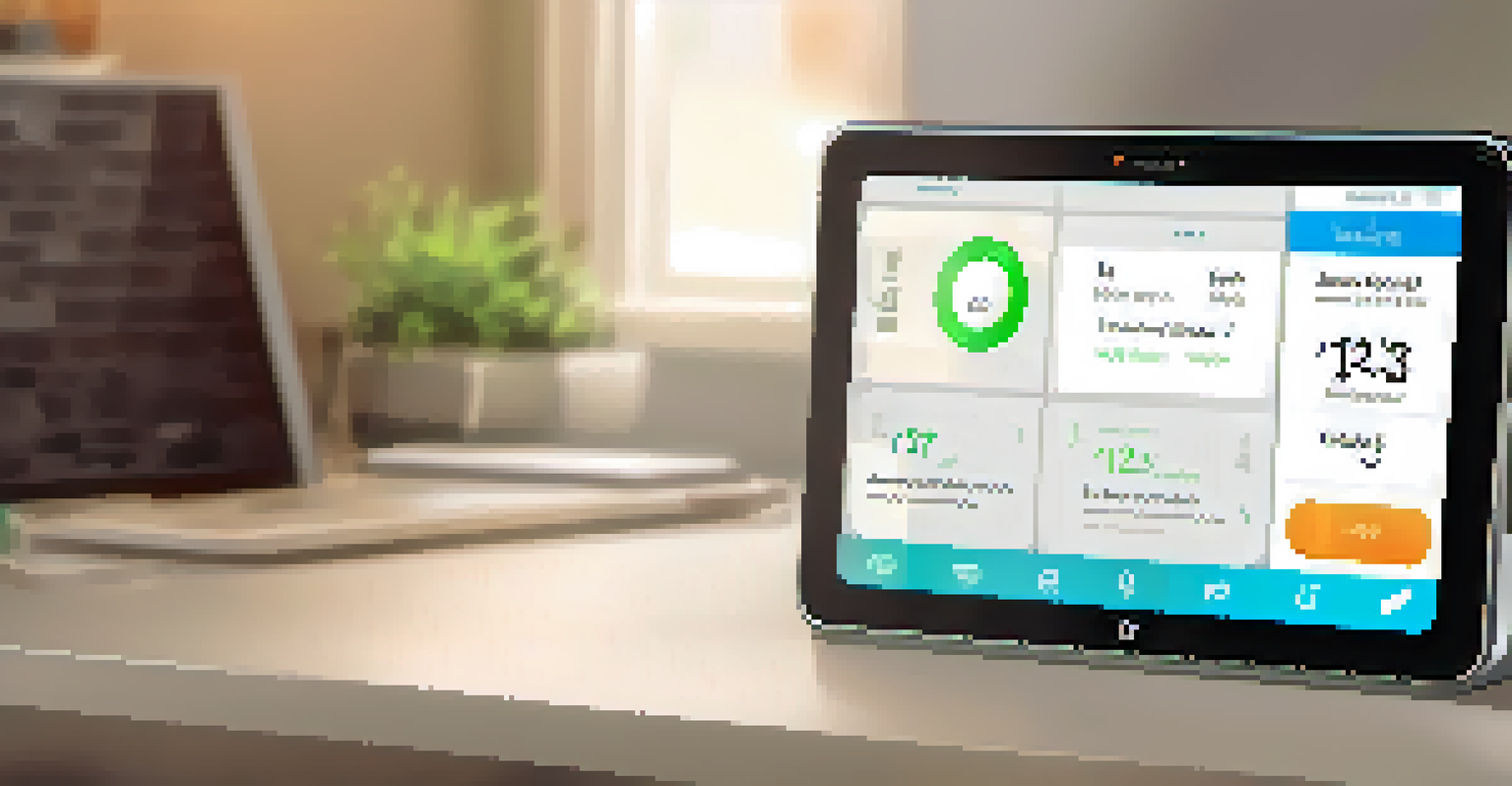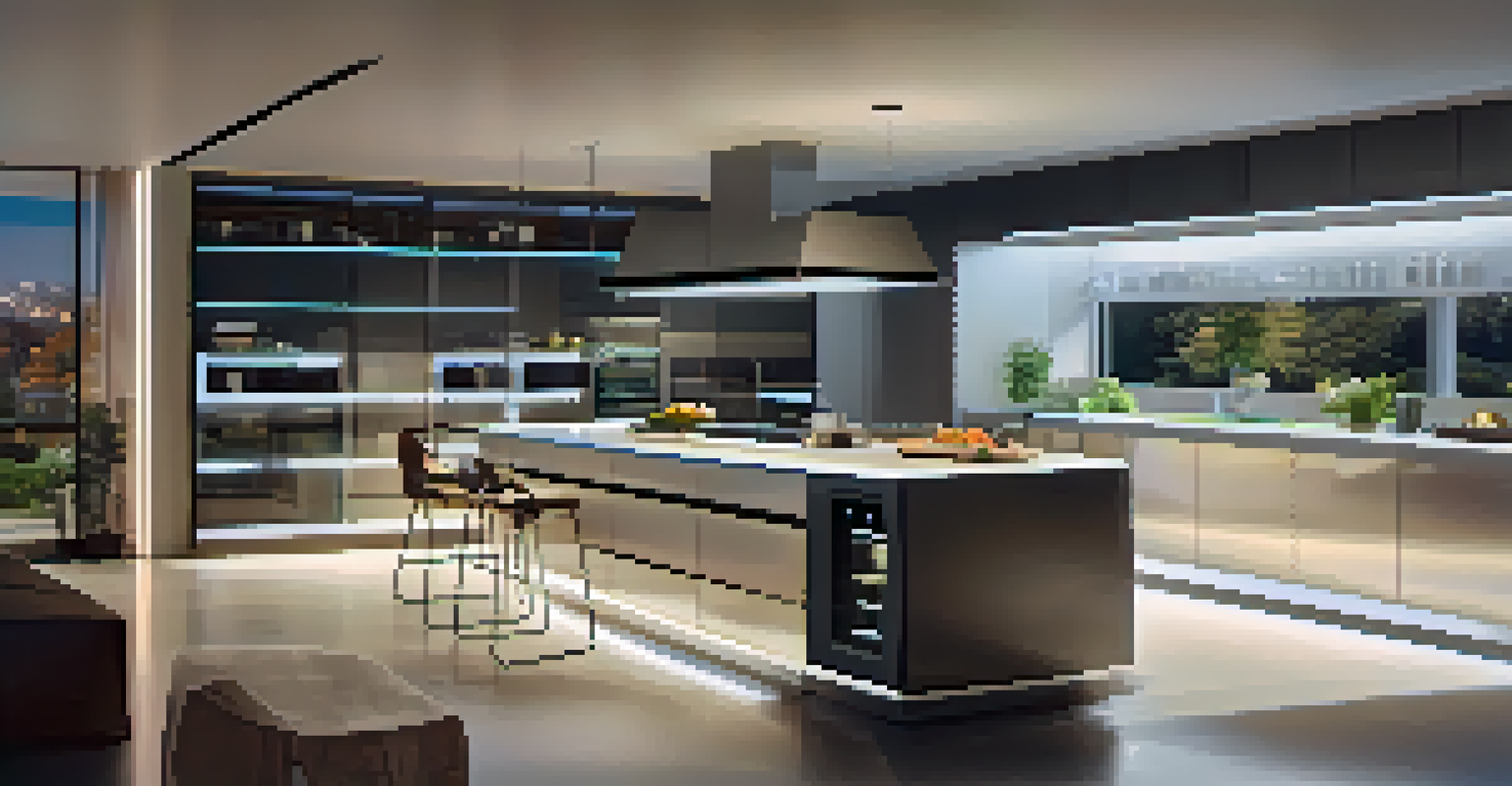Automating Your Home with Smart Hub Technology

What is Smart Hub Technology and How Does It Work?
Smart hub technology acts as the central brain of your home automation system. Think of it as the conductor of an orchestra, ensuring every instrument plays in harmony. By connecting various smart devices, such as lights, thermostats, and security cameras, a smart hub enables seamless communication and control.
Technology is best when it brings people together.
These hubs can manage multiple devices from different brands, which is a huge advantage. Instead of juggling several apps for your devices, you can control everything from a single interface, often on your smartphone or tablet. This streamlining makes it easier to manage your home environment and increases efficiency.
Furthermore, smart hubs often support voice commands, allowing you to control your devices hands-free. Just imagine walking into your home and saying, 'Turn on the lights' or 'Set the thermostat to 72 degrees,' and having everything respond instantly. This technology not only enhances convenience but also elevates your lifestyle.
Benefits of Automating Your Home with Smart Hubs
One of the most significant benefits of using smart hubs is energy efficiency. By automating your lighting and heating, you can reduce energy consumption significantly. For example, smart lights can turn off automatically when you leave a room, cutting down on wasted electricity.

Another advantage is enhanced security. With smart hub technology, you can set up alerts and monitor your home remotely. Imagine receiving a notification on your phone when someone rings your doorbell or when your security camera detects movement—this level of control provides peace of mind.
Smart Hubs Centralize Control
Smart hub technology acts as the central brain of your home automation system, allowing seamless control of various devices from a single interface.
Moreover, smart hubs can contribute to a more comfortable living experience. You can create schedules for your devices, ensuring that your home is always at your preferred temperature or that your favorite music plays at a specific time. The automation of these daily tasks can save time and allow you to focus on what truly matters.
Popular Smart Hub Options Available Today
When it comes to choosing a smart hub, there are several popular options on the market. Devices like Amazon Echo, Google Nest Hub, and Samsung SmartThings are well-known for their versatility and ease of use. Each of these hubs has unique features that cater to different needs and preferences.
The future is already here – it's just not very evenly distributed.
For instance, the Amazon Echo doubles as a voice assistant, allowing you to control your devices with simple voice commands. On the other hand, Google Nest Hub offers a visually appealing display for managing your devices and viewing security camera feeds. The choice ultimately depends on your existing devices and personal preferences.
It's also worth noting that many smart hubs can integrate with a wide range of third-party devices. This compatibility means you can expand your system over time without needing to replace your hub, making it a scalable solution for your home automation needs.
Setting Up Your Smart Hub: A Step-by-Step Guide
Setting up a smart hub is generally a straightforward process that can be done in just a few steps. First, you’ll need to connect the hub to your home Wi-Fi network. Most hubs come with user-friendly apps that guide you through the setup process, so you won’t feel overwhelmed.
Once connected, you can start adding your smart devices to the hub. This usually involves putting your device in pairing mode and following prompts on the app. For example, you might simply need to scan a QR code or enter a code displayed on the device, making the process efficient and user-friendly.
Boost Energy Efficiency
Automating your home with smart hubs can significantly reduce energy consumption by optimizing lighting and heating based on your habits.
After all your devices are connected, you can customize settings and create routines. Routines allow you to automate specific actions, such as turning off all lights and locking doors when you go to bed. With a little time and experimentation, you’ll find the setup process rewarding and empowering.
Integrating Smart Devices with Your Hub
Integrating smart devices with your hub is where the magic happens. Once all your devices are connected, the real benefits of automation come to life. For instance, you can create a ‘Good Morning’ routine that gradually brightens your smart lights and brews your coffee as you wake up.
Additionally, you can set your thermostat to adjust based on your daily schedule. If you're generally home during the evenings, you can have it warm up before you arrive, ensuring comfort without wasting energy while you're out. This level of integration significantly enhances your daily life.
Moreover, many smart hubs allow for integration with smart assistants like Alexa or Google Assistant. This means you can control your devices using simple voice commands, making your home even more responsive to your needs. Imagine asking your assistant to set the mood for a movie night by dimming the lights and turning on the TV—effortless entertainment at your fingertips.
Security Considerations with Smart Hub Technology
While smart hubs offer numerous benefits, it's essential to consider security implications. With so many devices connected to the internet, the risk of cyber threats increases. Therefore, ensuring your hub and devices have strong, unique passwords is crucial in safeguarding your home.
Additionally, keeping your software up to date can help protect against vulnerabilities. Many manufacturers release updates that improve security and add features, so regularly checking for these updates is a good practice. This small step can make a significant difference in your home's safety.
Future of Home Automation
The future of smart hubs promises more intuitive integration and advanced features, enhancing comfort and sustainability in our homes.
Lastly, consider using two-factor authentication for added security. This extra layer requires you to verify your identity through a second device, making it more challenging for unauthorized access. By taking these precautions, you can enjoy the convenience of smart hub technology with greater peace of mind.
The Future of Home Automation with Smart Hubs
The future of home automation looks promising, thanks to advancements in smart hub technology. With the rise of artificial intelligence and machine learning, we can expect our smart hubs to become even more intuitive and responsive. For example, imagine a hub that learns your preferences over time and adjusts your home environment automatically.
Moreover, as more devices become smart-enabled, the possibilities for integration are virtually limitless. We could see innovations in health monitoring, energy management, and even advanced security systems that work together seamlessly. This interconnectedness will create smarter, more efficient homes.

As we continue to embrace smart technology, our homes will evolve into spaces that not only enhance comfort and convenience but also promote sustainability. The future holds exciting opportunities that will empower us to lead more efficient and environmentally friendly lives, all thanks to smart hub technology.